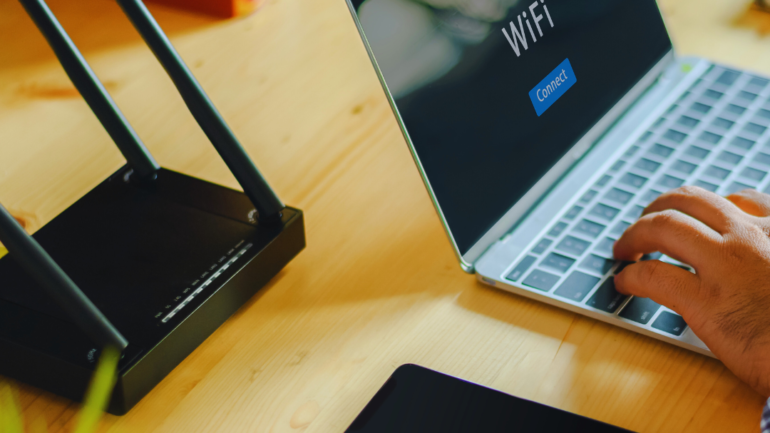Slow Wi-Fi can be a frustrating obstacle in today’s fast-paced digital world. For many, a reliable internet connection is essential for work, streaming, and staying connected with others. Improving Wi-Fi speed can often be achieved by repositioning the router, minimizing interference, and upgrading hardware or subscription plans.
Simple adjustments, such as moving the router to a central location in the home or using a Wi-Fi extender, can make a noticeable difference. Additionally, keeping the firmware updated and limiting the number of devices connected can help maximize performance. These strategies are practical steps anyone can take to enhance their internet experience.
Understanding why Wi-Fi slows down in certain areas can guide effective solutions. Factors like walls, appliances, and even furniture can interfere with signals. By identifying and addressing these issues, anyone can significantly boost their connection speed and enjoy seamless online activities.
Understanding Wi-Fi Speeds
Wi-Fi speeds can vary widely based on technology and environmental factors. Recognizing these elements helps in troubleshooting issues and optimizing performance effectively.
Wi-Fi Technology Basics
Wi-Fi technology operates through various standards defined by the IEEE 802.11 family. Common standards include 802.11n, 802.11ac, and 802.11ax, each with different speed capabilities and ranges.
- 802.11n: Supports speeds up to 600 Mbps in optimal conditions.
- 802.11ac: Enhanced maximum speeds of approximately 1.3 Gbps.
- 802.11ax (Wi-Fi 6): Further improvement with speeds reaching up to 10 Gbps, especially in crowded environments.
These standards also define band usage. Most devices operate on either the 2.4 GHz band, which covers a wider area but offers slower speeds, or the 5 GHz band, which provides faster speeds but less coverage.
Common Factors Affecting Wi-Fi Performance
Several factors can significantly impact Wi-Fi performance. Understanding these is critical for achieving optimal speeds.
- Signal Strength: Distance from the router weakens the signal. Obstacles such as walls and furniture further obstruct transmissions.
- Network Congestion: Multiple devices sharing bandwidth can slow down speeds. Each device competes for the same resources.
- Interference: Other electronic devices, including microwaves and baby monitors, can disrupt Wi-Fi signals, especially on the 2.4 GHz band.
- Router Quality: The make and model of the router play a crucial role. Newer models typically offer better performance and range.
Awareness of these factors allows for targeted strategies to enhance Wi-Fi speed.
Assessing Your Wi-Fi
Assessing the current state of a Wi-Fi network involves identifying its speed and overall health. This entails conducting speed tests and analyzing various network parameters, enabling users to pinpoint issues impacting performance.
Conducting a Speed Test
To effectively assess Wi-Fi performance, conducting a speed test is essential. This test measures both upload and download speeds, allowing users to understand their actual internet speeds compared to what they are paying for.
Several reputable websites and apps provide this service, such as:
- Speedtest.net
- Fast.com
- Google’s speed test
Users should connect to the Wi-Fi network directly and avoid using any heavy applications during the test. These tests can be repeated at different times to identify any fluctuations in speed throughout the day.
Analyzing Wi-Fi Network Health
Analyzing Wi-Fi network health involves examining various factors indicating its performance stability and reliability. Key metrics include signal strength, interference from other networks, and the number of connected devices.
Using tools like Wi-Fi analyzers can help identify areas of congestion. These tools display:
- Signal strength
- Channel usage
- Network types
A strong connection typically ranges from -30 dBm to -50 dBm. Signals weaker than -70 dBm often lead to connection issues. Assessing device connections helps ensure that there are no excessive devices impacting the bandwidth, leading to better performance.
Improving Wi-Fi Speed
Improving Wi-Fi speed involves strategic actions that enhance signal strength and reliability. By optimizing router placement, managing bandwidth, and keeping hardware updated, users can significantly boost their connection quality. Taking a look into Antennas and signal boosters as well can offer a multitude of benefits that will keep the connection consistently strong.
Optimal Router Placement
Positioning the router correctly is crucial for maximizing Wi-Fi performance. Ideally, it should be placed in a central location to evenly distribute the signal throughout the home or office.
Key Placement Tips:
- Avoid placing routers in basements or enclosed spaces.
- Keep it elevated, such as on a shelf, to enhance signal reach.
- Maintain distance from walls and obstructions.
Signals can weaken when passing through concrete, metal, or water. Users should consider minimizing interference from microwaves, cordless phones, and other electronic devices.
Managing Wi-Fi Bandwidth
Effective bandwidth management can improve speed by reducing congestion. This involves limiting the number of devices connected simultaneously and prioritizing bandwidth-heavy applications.
Strategies for Management:
- Use Quality of Service (QoS) settings to allocate bandwidth to specific devices or applications.
- Disconnect unused devices to free up resources.
- Schedule large downloads and updates during off-peak hours for better performance.
Utilizing dual-band routers can also help. A 2.4 GHz band covers a larger area, while a 5 GHz band offers faster speeds but shorter range. Users should balance their connections based on needs.
Updating Hardware and Firmware
Regularly updating router firmware and considering hardware upgrades can enhance performance. Manufacturers release updates to fix bugs or improve security, which can indirectly affect speed.
Important Actions:
- Check for firmware updates every few months. This usually involves accessing the router’s admin panel.
- Upgrade to newer routers with advanced standards, such as Wi-Fi 6, for better speed and efficiency.
- Ensure that all connected devices are compatible with the latest Wi-Fi standards to fully realize speed benefits.
Investing in upgraded routers can provide better range, faster speeds, and improved connectivity in high-demand environments.
Configuring Your Router
Proper configuration of a router can significantly enhance Wi-Fi performance. Focus on channel selection, network security, and Quality of Service (QoS) settings to optimize connectivity and speed.
Changing Wi-Fi Channels
Wi-Fi routers broadcast data on specific channels, which can become crowded. In many areas, overlapping channels can lead to interference, particularly in 2.4 GHz networks.
To change Wi-Fi channels, access the router’s settings via a web browser, using the router’s IP address (often 192.168.1.1 or 192.168.0.1). Once logged in, navigate to the wireless settings.
Select a channel that is less congested. For the 2.4 GHz band, channels 1, 6, and 11 are generally best. For the 5 GHz band, there are more channels available, allowing for better performance and less interference. Regularly checking for optimal channels helps maintain a strong connection.
Securing Your Wi-Fi Network
A secure Wi-Fi network prevents unauthorized access that can slow down performance. Weak security settings expose the network to unwanted users who can consume bandwidth.
Change the default SSID and password when setting up the router. Use WPA3 encryption for the best protection, or WPA2 if WPA3 is unavailable. Avoid WEP security, as it is outdated and vulnerable.
Consider disabling WPS (Wi-Fi Protected Setup) as it can present security vulnerabilities. Regularly updating the router’s firmware ensures the latest security features are in place, further protecting the network from threats.
Quality of Service Settings
Quality of Service (QoS) settings allow prioritization of bandwidth for critical applications like video streaming or online gaming. This ensures that important tasks receive adequate resources, improving performance.
Access the QoS settings in the router’s control panel. Users can typically set priorities for devices or applications. Assign high priority to devices that need stable connections, such as gaming consoles or streaming devices.
Properly configuring QoS can minimize lag and improve speeds for critical applications. Users should regularly review the QoS settings to ensure they meet current needs.
Extending Wi-Fi Coverage
Extending Wi-Fi coverage is crucial for ensuring a strong internet connection throughout a space. Options such as Wi-Fi extenders, mesh networks, and network access points are effective solutions to eliminate dead zones and improve connectivity.
Using Wi-Fi Extenders
Wi-Fi extenders amplify the existing signal from a router and broadcast it to hard-to-reach areas. They are simple to set up, requiring a connection to the home network through an app or a web interface.
To choose a suitable extender, consider the following:
- Compatibility: Ensure the extender works with your router’s frequency bands (2.4 GHz or 5 GHz).
- Placement: Position the extender halfway between the router and the area needing coverage. Avoid physical obstructions.
- Speed: Look for extenders that support high-speed connections to maximize performance.
A well-placed Wi-Fi extender can significantly enhance signal strength and provide better internet access in difficult locations.
Setting Up Mesh Networks
Mesh networks consist of multiple nodes strategically placed to create a seamless Wi-Fi coverage area. Unlike traditional routers, mesh systems use multiple access points to efficiently distribute signals.
Key advantages include:
- Coverage: They eliminate dead zones by spreading the signal evenly across a property.
- Scalability: Additional nodes can be added easily to expand coverage as needed.
- Consistency: Mesh networks maintain speed and reliability across devices.
Setting up a mesh network typically involves placing nodes in different areas, and linking them through an app for easy management. This system is particularly suitable for larger homes or offices.
Network Access Points
Network access points (APs) connect directly to the router via Ethernet and create a new Wi-Fi zone. They are ideal for expanding coverage in specific areas without relying on the main router’s range.
Consider these aspects:
- Wiring: Utilizing Ethernet cables ensures fast and stable connections. This configuration is beneficial in dense environments.
- Location: Position APs in strategic locations where Wi-Fi is weak while avoiding obstructions.
- Performance: Many access points support multiple users and high bandwidth, making them suitable for environments with heavy internet usage.
Network access points are an effective solution for boosting coverage where Wi-Fi signals may struggle to reach otherwise.
Optimizing Wireless Devices
Improving the performance of devices connected to Wi-Fi networks is essential for a seamless internet experience. Focus on managing interference and minimizing background data usage to enhance connectivity.
Interference Management
Wireless signals can be disrupted by physical obstructions or electronic devices. Common sources of interference include microwaves, cordless phones, and Bluetooth devices. Identifying and relocating these items can improve signal strength.
Positioning the router in a central location within the home or office can also reduce interference. Elevating the router boosts coverage and minimizes barriers like walls. Adjusting the router’s channel in settings may further mitigate overlap with neighboring networks, leading to a clearer signal.
Additionally, using dual-band or tri-band routers can help. These devices allow simultaneous connections on different frequencies, reducing congestion on the network.
Limiting Background Data Usage
Devices often run applications that consume data without direct user interaction. Limiting these apps is crucial for optimizing Wi-Fi performance. Users can adjust settings to restrict background data usage in their device’s operating system.
Specific steps include:
- Disabling auto-update features for apps when on Wi-Fi.
- Turning off syncing for non-essential applications.
- Monitoring network usage through device settings to identify data-hungry applications.
Encouraging users to schedule updates and backups during off-peak hours can significantly free up bandwidth. By managing background data effectively, users can experience improved speed and reliability of their Wi-Fi connection.
Advanced Setups
Exploring advanced setups can significantly enhance WiFi performance. These methods include custom firmware and solutions typically used in enterprise settings, which can optimize home networks effectively.
Custom Firmware Solutions
Custom firmware, such as DD-WRT, OpenWRT, or Tomato, can improve router performance through advanced features and configurations. These firmware options allow for greater control over network settings, enabling users to fine-tune their WiFi experience.
Key benefits include:
- Increased control over QoS (Quality of Service) settings to prioritize bandwidth for specific devices.
- Enhanced security features, including better encryption protocols.
- Support for advanced wireless modes, such as dual-band or tri-band functionality, enables better performance across multiple devices.
Installing custom firmware requires careful attention to compatibility with the hardware and proper installation procedures to avoid bricking the device.
Enterprise Solutions for Home Use
Enterprise solutions can elevate home networking through equipment typically reserved for larger organizations. Upgrading to a commercial-grade router or access point can provide superior performance and reliability.
Considerations include:
- Support for multiple SSIDs, allowing separation of work and personal devices.
- Advanced VLAN configurations for improved security and network segmentation.
- Higher throughput and range, often leading to a more stable connection in larger homes.
While these solutions may carry a higher upfront cost, the long-term benefits often justify the investment, especially for high-demand environments.





